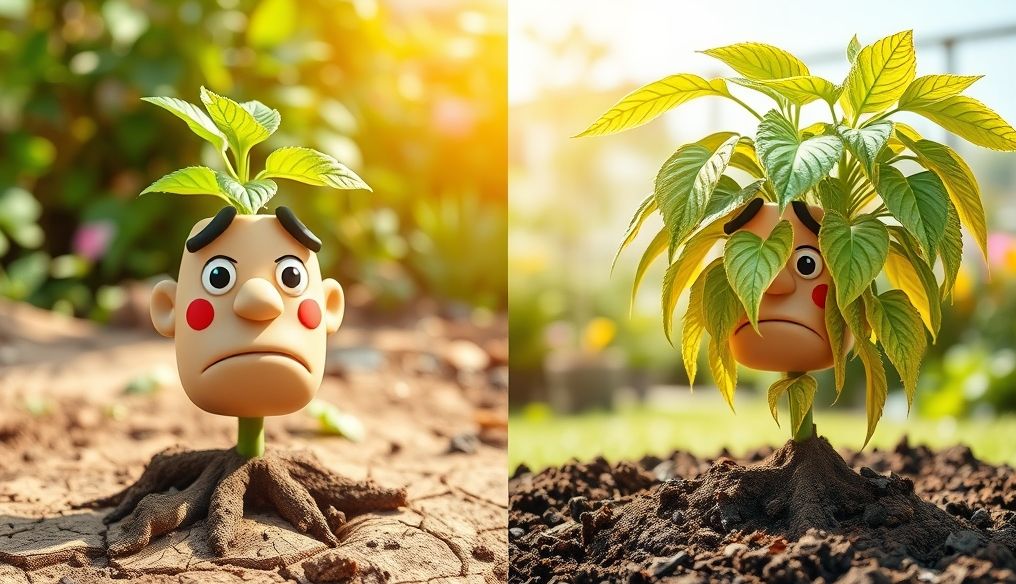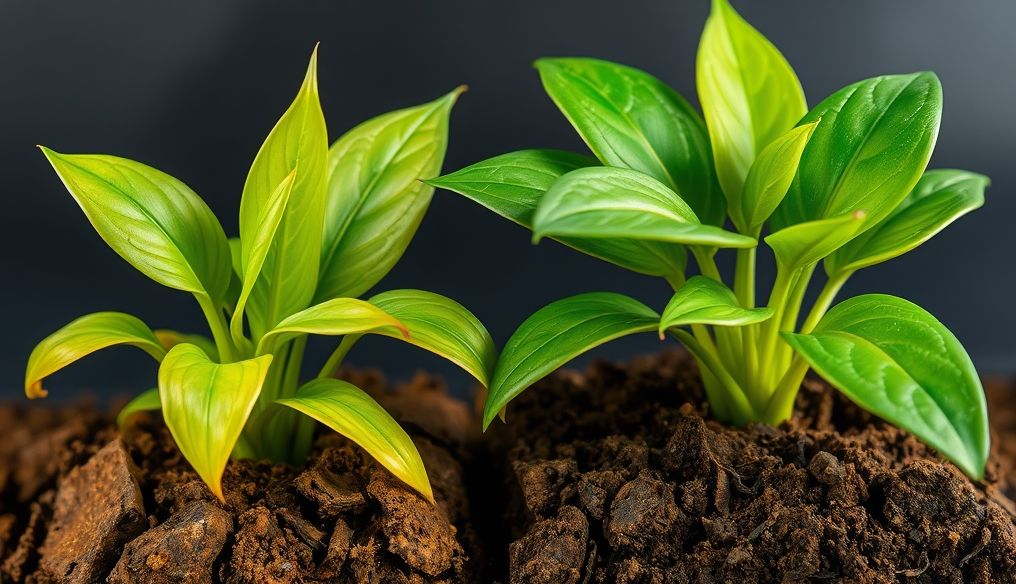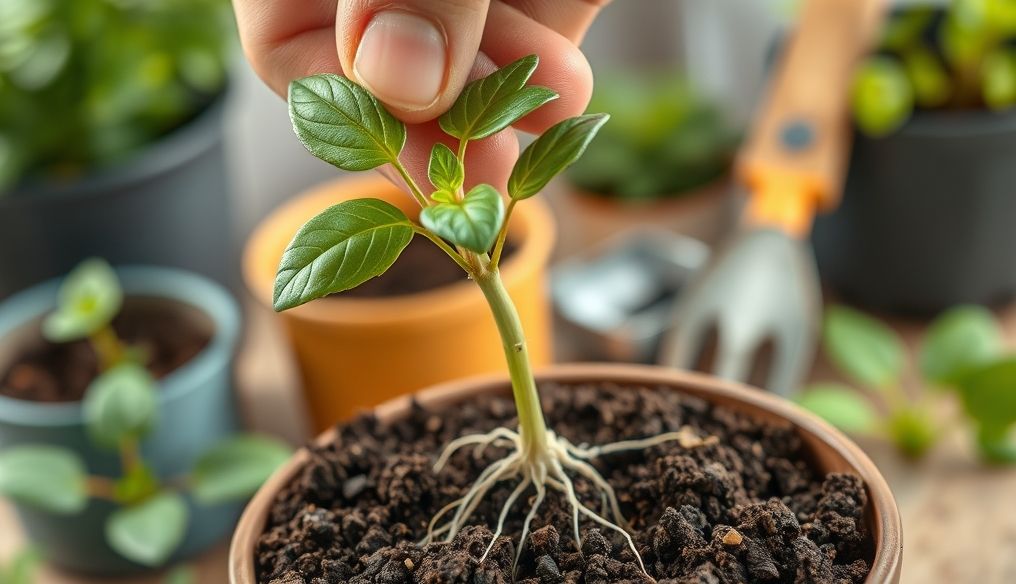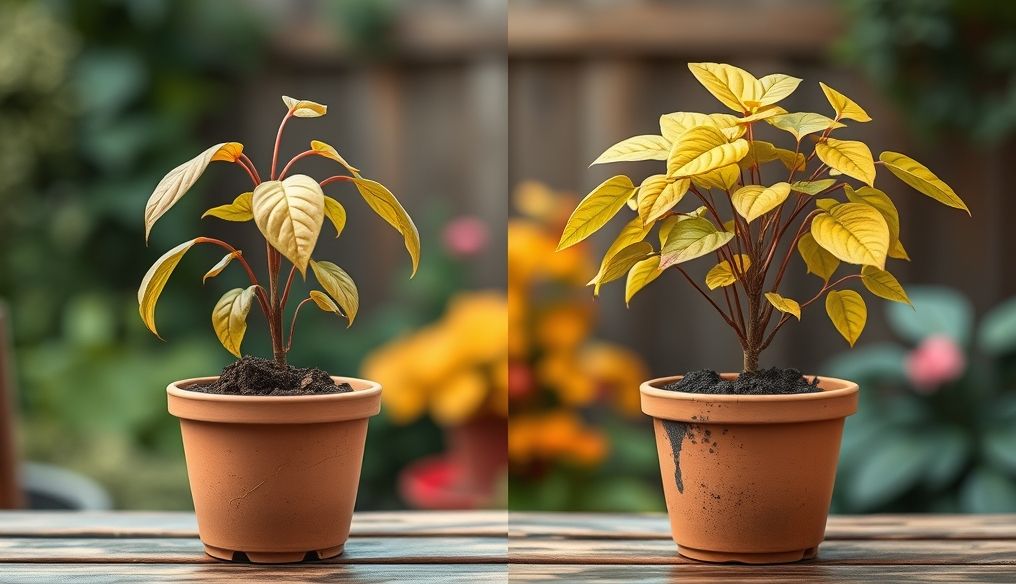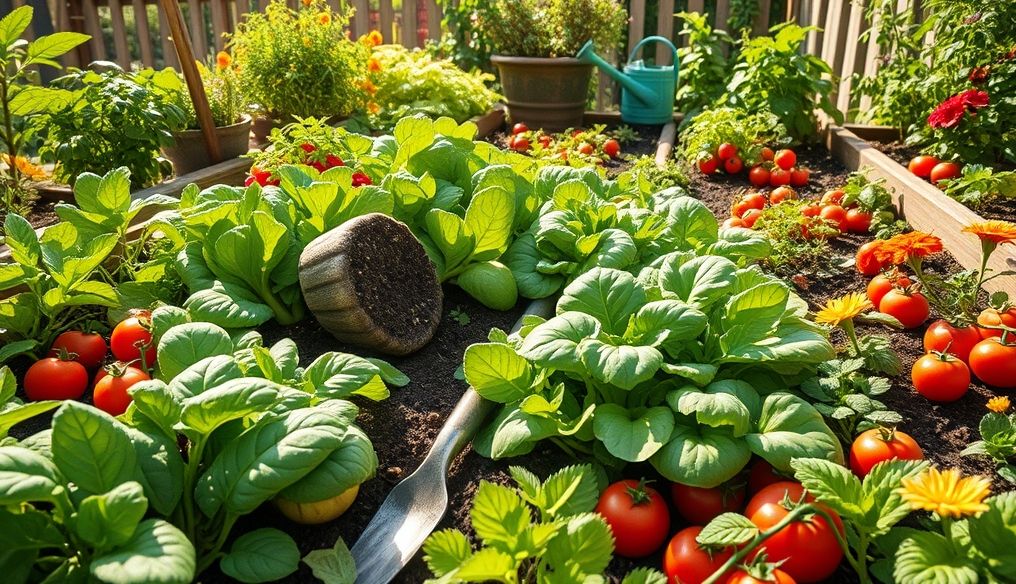What are the signs of overwatering or underwatering plants and how to fix them?
Proper watering is key to plant health and growth. Whether you're a beginner gardener or have experience, understanding your plants' water needs is crucial. Overwatering or underwatering can lead to a variety of problems that may threaten the life of your plants. In this article, we will explore the signs of both conditions and how to treat them.
Chapter 1: The Importance of Proper Watering
Water is essential for photosynthesis, where plants use water and carbon dioxide to produce food. It also helps transport nutrients from the soil to different parts of the plant. Without enough water, plants will suffer and wilt. However, too much water can also be harmful, leading to root rot and other problems.
Chapter 2: Signs of Overwatering
Overwatering is a common problem, especially for beginners. Here are some signs that indicate you may be watering your plants too much:
- Yellowing Leaves: Yellow leaves, especially in the lower parts of the plant, can be a sign of overwatering.
- Dropping Leaves: Green or yellow leaves may fall off abnormally.
- Consistently Wet Soil: If the soil is always wet even after several days, this indicates that you are watering too much.
- Root Rot: This is a serious condition where the roots rot due to excess water. There may be a foul odor coming from the soil.
- Fungal Growth: You may notice the growth of fungi or mold on the soil surface or the plant.
Chapter 3: How to Treat Overwatering
If you find that you are overwatering your plants, here are some steps you can take:
- Stop Watering Temporarily: Allow the soil to dry out completely before watering again.
- Improve Drainage: Make sure the pot has adequate drainage holes. You can also add a layer of gravel at the bottom of the pot to improve drainage.
- Repot the Plant: If root rot is advanced, you may need to repot the plant into fresh, dry soil. Remove any rotten roots before planting.
- Use a Fungicide: In severe cases, you may need to use a fungicide to treat root rot.
Chapter 4: Signs of Underwatering
Underwatering means that the plant is not getting enough water. Here are some signs that indicate you may not be watering your plants adequately:
- Wilting Leaves: Wilting leaves are a classic sign of underwatering.
- Dry and Crispy Leaves: The leaves may become dry, brittle, and easily broken.
- Slow Growth: You may notice that the plant is not growing as fast as it should.
- Dry Soil: If the soil is completely dry and separates from the sides of the pot, this indicates underwatering.
- Leaf Drop: Dry and dead leaves may fall off.
Chapter 5: How to Treat Underwatering
If you find that you are not watering your plants adequately, here are some steps you can take:
- Deep Watering: Water the plants thoroughly until water drains out of the drainage holes.
- Increase Watering Frequency: Increase the number of times you water, especially during hot and dry weather.
- Soak the Plant: If the soil is very dry, you can soak the pot in a basin of water for 30 minutes to allow the soil to absorb water.
- Use Mulch: Mulch can help retain soil moisture and reduce evaporation.
Chapter 6: Factors Affecting Watering Needs
Watering needs are affected by several factors, including:
- Plant Type: Some plants need more water than others.
- Soil Type: Clay soil retains water longer than sandy soil.
- Climate: Plants need more water during hot and dry weather.
- Pot Size: Plants in small pots dry out faster than plants in large pots.
- Growth Stage: Young plants need less water than mature plants.
Chapter 7: Tips for Proper Watering
Here are some additional tips to ensure proper watering for your plants:
- Check Soil Moisture: Before watering, insert your finger into the soil to a depth of a few centimeters. If the soil is dry, it's time to water.
- Water Early in the Morning: This allows the leaves to dry during the day, reducing the risk of fungal diseases.
- Use Lukewarm Water: Avoid using water that is too cold or too hot.
- Water Slowly: Water the plants slowly to allow the soil to absorb water evenly.
- Monitor Plants Regularly: Look for signs of overwatering or underwatering and adjust your watering schedule accordingly.
Chapter 8: Useful Tools for Watering
There are several tools that can help you with proper watering of your plants, including:
- Soil Moisture Meter: Accurately measures soil moisture.
- Watering Cans with Long Spouts: Allow for precise and targeted watering.
- Drip Irrigation Systems: Provide a constant amount of water directly to the roots of the plants.
- Sprinklers: Used to water large areas of gardens.
Chapter 9: Practical Examples
Example 1: You noticed that the leaves of your tomato plant started to wilt even though you were watering it regularly. After checking the soil, you found that it was too wet. You stopped watering for a few days, and the plant's condition improved. Then you started watering less frequently, making sure the soil dried out a bit between waterings.
Example 2: You noticed that the leaves of your cactus plant became wrinkled and started to fall off. After checking the soil, you found that it was completely dry. You watered the plant thoroughly and placed it in a more humid location. Within a few days, the leaves started to regain their normal shape.
Chapter 10: Conclusion
Proper watering is an art and a science. By understanding the signs of overwatering and underwatering, and following the tips mentioned above, you can ensure that your plants get the right amount of water they need to thrive. Remember that regular monitoring and fine adjustments are key.
Important Note: The information in this article is for general guidance only. Exact watering needs may vary depending on the plant type and environmental conditions. Always consult reliable sources for specific information about your plants.
